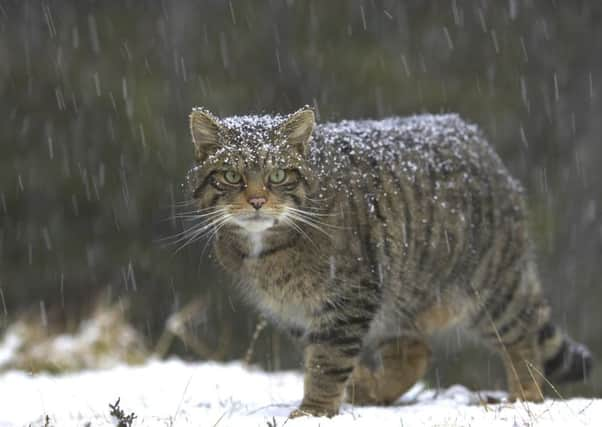Lindsay Mackinlay: Why we're wild about the Scottish wildcat


The Scottish wildcat is one of the rarest animals in the UK, with remaining populations hanging on by their claws in the forests and glens of the Highlands. It is a magnificent animal, elusive by nature, well designed for our climate, the very essence of nature untamed.
The “Scottish” part of its name reflects the fact that it is now only found in Scotland rather than any choice on the part of the cat itself not to cross the Border. This carnivore has suffered from past human persecution coupled with the loss of its habitat, to the extent that it disappeared from the rest of the UK between 150-200 years ago; another casualty of our philosophy of controlling the landscape and those species we considered “vermin”. Sadly, control of the wildcat continued throughout most of the 20th century, pushing remaining animals to the far north.
Advertisement
Hide AdAdvertisement
Hide AdWith increased forest cover and legal protection, wildcat populations recovered a little, but other threats have taken on greater significance in recent decades.
An army of feral cats and unwanted moggies, numbered in their thousands in Scotland, has expanded across the wildcat’s range, spreading feline diseases, and threatening the loss of the wildcat’s very essence as they breed and hybridise with their wild cousins. In this conservation nightmare, the Scottish wildcat has become rarer than the Indian tiger.
There is good news on the horizon, which offers the only real hope to conserve the Scottish wildcat. A large group of respected conservation and landowner organisations and experts, have pulled together to produce a simple plan to try to save the wildcat. The Scottish Wildcat Conservation Action Plan may not make scintillating reading but it does set out what we need to do to save this species. It will also tell you that Scottish Natural Heritage is working in partnership with the likes of the National Trust for Scotland (NTS) and other environmental NGOs, as well as the Scottish Gamekeepers Association, zoo, vet and genetic experts, national parks, Forestry Commission Scotland and many others, including politicians such as Aberdeenshire councillor Katrina Farquhar and Rhoda Grant MSP, who is the species champion in the Scottish Parliament. Few other species have so many friends on their side.
A generous grant from the Heritage Lottery Fund, backed up by Scottish Government financial support and much support in kind from other partners and donors, has seen a £1 million project to save the wildcat kick off in 2015, learning much from the Highland Tiger project, which trialled practical wildcat conservation action in the Cairngorms National Park between 2009 and 2012. This new project is called Scottish Wildcat Action. It aims to try to save the Scottish wildcat, focusing on six priority areas in Scotland, including Morvern, Strathpeffer, Strathbogie, Strathavon, northern Strathspey and the Angus glens.
In each area, it is proposed to use a combination of methods to increase wildcat numbers. This will include the trap-neuter-vaccinate-release of feral cats, working with landowners and estates, detailed monitoring, and local community projects. It is a hugely ambitious project that faces many challenges, but it needs everyone to get behind it in order to give it the best chance of success.
In addition to this project, the Royal Zoological Society of Scotland is leading the way in creating the infrastructure and providing the expertise, along with other partners, to breed wildcats for eventual release back into the wild in the right locations. In a sense, they are building a lifeboat for the species. Meanwhile, beyond all this work, bodies like NTS and RSPB are using trail cameras to find out if wildcats live on their land.
At the moment, we do not know how many wildcats are left in the wild in Scotland, and indeed, how many have maintained their genetic integrity to be suitable for conservation breeding and release programmes. However, ignorance is no reason for inaction. It is early days in our important conservation work but the flood of offers of help to the Scottish Wildcat Action project and within partner organisations demonstrate that this untamed species matters to us all.
• Lindsay Mackinlay, Nature Conservation Adviser, National Trust for Scotland For more information, check out the Scottish Wildcat Action webpage: www.scottishwildcataction.org